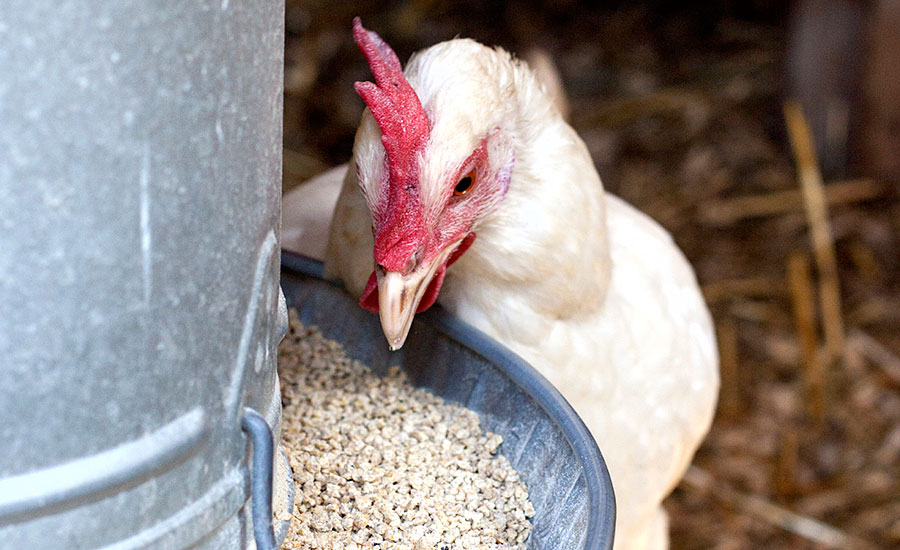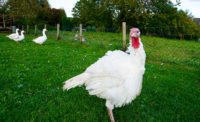As I was recently grocery shopping, I could not help but gaze at all of the different types of marketing statements on meat packaging. Growing up, I remember when dairy producers were being catapulted with questions about injecting their cows with additional bST, also known as bovine somatotropin. bST is a naturally occurring bovine hormone, but was being used to increase cow milk production rates and increase milk yields.
From an animal-welfare standpoint, I think using this product was detrimental to cow health because it was pushing an already heavy-producing animal to produce more. I personally do not believe it served as a major concern to human health. If this claim were true, and it did affect human growth rate, I should be well over six feet tall by now, given the gallon of milk I happily drink every week. Unfortunately for me, that is not the case.
Because of consumer feedback in the late 1990s and early 2000s, there are now guidelines and regulations set forth by the FDA to help keep our products safe, and milk cartons now have claims stating “no added bST.”
After I put my gallon of milk in the cart, I moved from the refrigerated section to the frozen section. I tried to decide which package of frozen chicken breast I was going to buy. Some packages had claims placed on the front stating the chicken was “raised with no added hormones or steroids.” I couldn’t help but grin at this statement because, just as the consumers were once concerned about bST, we are now apprehensive about hormones and steroids used in animal production affecting human health.
Once again, from an animal-welfare standpoint, I do not think that we should be pushing these highly producing animals further by manipulating their already fast growth rate. As is the case with bST, many hormones are naturally found in animals, including human growth hormone in humans. Yet, using them to increase meat production, especially in poultry, has the potential to create more problems where the animals will not be able to keep up with the demands of their bodies. Additionally, the major concern surrounding the use of growth promoters for animals destined for meat production is overuse of any antibiotic over a period of time may lead to the local bacterial populations becoming resistant to the antibiotic. Nevertheless, I think it is important for consumers to know what growth hormones, growth promoters and other products are used for in the industry currently and what they are.
Growth hormones and promoters
Growth hormone is composed of protein that is used in the body to stimulate general growth and cell renewal. It is also considered a stress hormone that raises circulating glucose concentration. Growth hormone can be used in animals to increase production in more ways than one. As previously stated, bST has been used in the dairy industry to help increase milk production rates. In the poultry industry, it could possibly be used to increase egg production, size of eggs, and develop muscle in meat birds at a faster rate.
Growth promoters are usually antimicrobial or antibiotic products that are added to feed. Unlike hormones that are naturally found within the body, there is the potential for resistance to develop over time, although their use in large-scale agriculture seems to be minimal for those unimportant to human medicine. Most of these products help improve performance by interacting with the intestinal microbiota. Some examples of antibiotics that historically have been used in poultry production to help fatten birds are erythromycin, mocimycin, nosiheptide, and ardacin, to name a few. Between growth hormone usage and antibiotic usage, I am far more worried about the use of antibiotics and proper management practices to keep the resistance levels as low as possible. There are a few other products that are far less scary and can be just as beneficial for production with minimal problematic side effects for the animal.
Ionophores
Ionophores are feed additives used to control and treat coccidiosis, which is a protozoan parasite that invades the cells of the intestines of birds. Once the invasion occurs, the parasite multiplies and causes severe inflammation of the intestinal lining, which will lead to decreased production, and eventually death of the animal. The action of these products is to allow low levels of coccidia to survive within the animal, aiding in developing immunity, usually through a vaccination to this horrible parasite. This allows the bird to grow and thrive effectively as they will not become extremely sick. Some examples of products currently on the market are bambermycin, monensin, narasin and salinomycin. Unlike antibiotics, these products are using the coccidiosis to keep the intestinal lining from becoming further infested.
Prebiotics and probiotics
Prebiotics and probiotics are almost a class entirely their own. These products are used to help maintain a healthy digestive system and are found regularly in foods we eat, such as yogurt. Prebiotics are usually non-digestible carbohydrates and are used to feed probiotics. Probiotics are the “good” live bacteria and yeast products that animals, including us, benefit from. They help the digesta flow at an increased rate through the intestines and can even help with absorption of nutrients. The two most common probiotics found in animal production are lactobacillus and bifidobacterium.
Conclusion
Using any of these products can help or hinder animal production at varying degrees. Consumer, retailer influences and end users of our industries’ products are generating a greater influence in our decisions, and it would be a mistake on our part to ignore them. Historically, we have used these products to help the animal battle pathogens; however, I think moving away from antibiotics and toward alternative products to help increase production potentially give the animal a better life while keeping our food supply chain safe is a smart decision. The right answer very well may be the right combination of these options instead of a silver bullet. With an ever-increasing global population, finding more efficient ways to feed the world while giving our animals the best life possible, is why it is important to educate the public on what occurs behind the doors of animal production.







